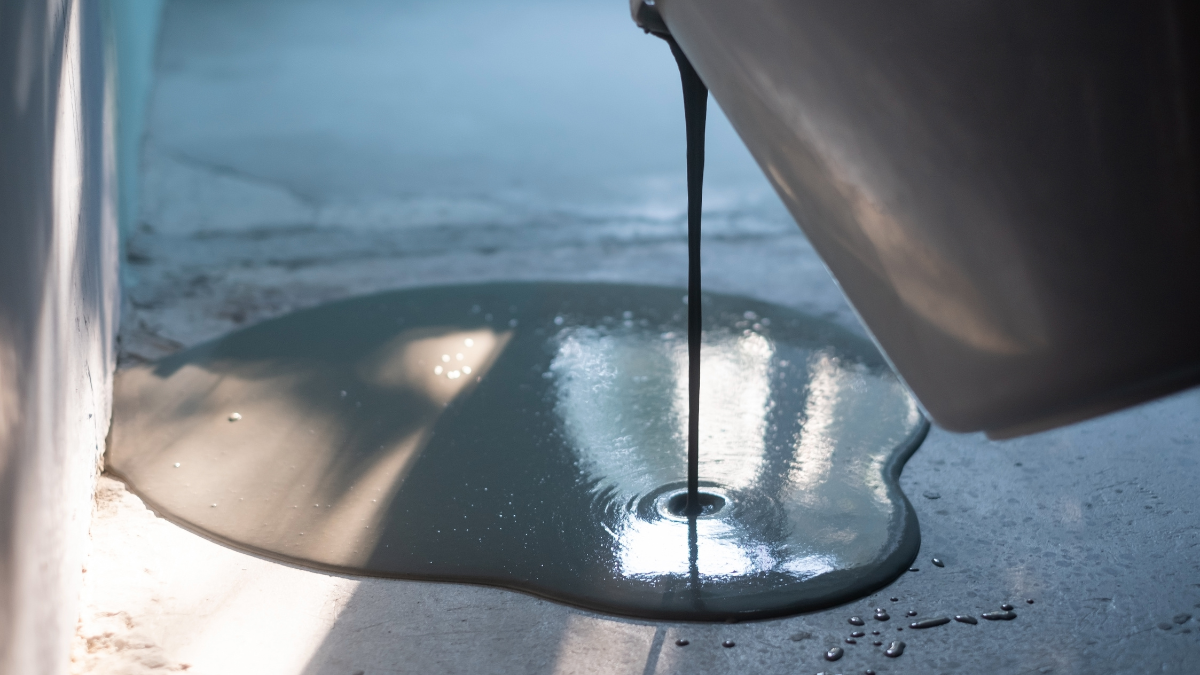Understanding and Using Floor Levelling Compound
Introduction
A level floor is crucial for the proper installation and longevity of any flooring type. Uneven floors can lead to various issues such as gaps, cracks, and premature wear. Floor levelling compounds provide an effective solution for creating a smooth, even surface. This comprehensive guide will cover everything you need to know about floor levelling compounds, including types, applications, and best practices.
What is Floor Levelling Compound?
Floor levelling compound is a specially formulated mixture used to correct uneven or rough subfloors. It creates a smooth, level surface ideal for installing various flooring materials.
Definition and Purpose
A floor levelling compound is a self-smoothing, cement-based mixture that fills dips, cracks, and low spots on a subfloor. Its primary purpose is to create an even surface, ensuring a stable base for the final flooring layer.
Types of Floor Levelling Compounds
There are several types of floor levelling compounds, each designed for specific applications and subfloor conditions.
Self-Levelling Compound
Self-levelling compounds are designed to flow and settle evenly with minimal assistance, making them ideal for minor imperfections.
- Uses: Correcting minor imperfections in subfloors
- Benefits: Flows and settles evenly with minimal assistance
- Applications: Concrete and screed subfloors
Latex Levelling Compound
Latex levelling compounds contain latex additives for flexibility, making them suitable for wooden subfloors which may expand and contract.
- Uses: Suitable for wooden subfloors
- Benefits: Flexibility to accommodate expansion and contraction
- Applications: Wooden and plywood subfloors
Fibre-Reinforced Compound
Fibre-reinforced compounds are reinforced with fibres to add strength and prevent cracking, perfect for heavier-duty applications and thicker layers.
- Uses: Heavier-duty applications requiring additional strength
- Benefits: Added strength and crack prevention
- Applications: Industrial floors, areas requiring thicker layers
By understanding the different types of floor levelling compounds and their specific uses, you can choose the right product to ensure a smooth, level surface for your flooring project.
When to Use Floor Levelling Compound
Knowing when to use floor levelling compound is essential for achieving the best results. Here are some scenarios where it is beneficial:
Identifying Uneven Floors
Identifying uneven floors is the first step in determining if a floor levelling compound is needed.
- Look for visible dips or high spots: Check the floor visually for any noticeable irregularities.
- Use a spirit level or laser level: These tools help detect even slight unevenness.
- Check for gaps between the subfloor and a straight edge: Place a straight edge on the floor to see if there are any noticeable gaps indicating uneven spots.
Benefits of Using Floor Levelling Compound
Using a floor levelling compound offers several advantages for your flooring project.
- Improved Flooring Installation: A level subfloor ensures a smoother installation process and prevents future issues.
- Increased Durability and Longevity: Even floors reduce stress on the flooring material, preventing cracks and damage.
- Enhanced Aesthetic Appeal: A smooth, level floor looks more professional and visually appealing.
By identifying uneven floors and understanding the benefits of using a floor levelling compound, you can ensure a successful and aesthetically pleasing flooring installation.
Preparing the Floor
Proper preparation is crucial for the success of the floor levelling process. Follow these steps to ensure a smooth and level surface.
Cleaning and Priming the Surface
- Remove Debris, Dust, and Grease
- Clear the subfloor of any debris.
- Vacuum thoroughly to remove dust and small particles.
- Ensure the surface is free of grease and other contaminants.
- Apply Primer
- Choose a suitable primer for your subfloor material.
- Apply the primer using a roller for even coverage.
- Allow the primer to dry completely to promote adhesion and prevent the compound from drying too quickly.
Repairing Cracks and Holes
- Fill Large Cracks and Holes
- Use a suitable filler to fill any large cracks or holes.
- Let the filler dry completely before proceeding.
- Sand Rough Areas
- Sand down any rough or uneven areas to create a smooth surface.
- Vacuum again to remove any sanding dust.
Tools and Materials Needed
Gather all necessary tools and materials before starting the application process.
- Floor levelling compound
- Primer
- Mixing bucket
- Drill with mixing paddle
- Trowel or smoothing tool
- Roller (for applying primer)
- Protective gear (gloves, goggles, mask)
Application Process
Applying floor levelling compound requires careful mixing and spreading to achieve the best results. Follow these steps for a successful application.
Mixing the Compound
- Follow Manufacturer’s Instructions
- Check the manufacturer’s instructions for the correct water-to-compound ratio.
- Mix Thoroughly
- Use a drill with a mixing paddle to mix the compound.
- Mix until a smooth, lump-free consistency is achieved.
Pouring and Spreading the Compound
- Pour the Mixture
- Pour the mixed compound onto the prepared floor.
- Spread Evenly
- Use a trowel or smoothing tool to spread the compound evenly across the surface.
- Work quickly, as the compound begins to set within a few minutes.
Using a Trowel or Roller for Even Distribution
- Use a Long-Handled Roller
- For larger areas, use a long-handled roller to help spread the compound evenly.
- Eliminate Air Bubbles
- Ensure there are no air bubbles or gaps by smoothing the surface thoroughly.
Allowing Proper Drying and Curing Time
- Follow Drying Instructions
- Refer to the manufacturer’s instructions for specific drying and curing times, typically 24 to 48 hours.
- Avoid Walking on the Surface
- Do not walk on the surface until it is fully cured to avoid damaging the levelling compound.
By following these detailed steps, you can ensure a successful floor levelling process, providing a smooth and stable base for your final flooring layer.
Tips and Best Practices
Adhering to best practices ensures a smooth and successful floor levelling project. Follow these tips to achieve the best results.
Working Time and Temperature Considerations
Be mindful of the working time of the compound, usually 20-30 minutes, and ensure the room temperature is within the recommended range for optimal curing.
- Working Time: Typically 20-30 minutes.
- Work in Manageable Sections: Avoid the compound setting too quickly.
- Room Temperature: Ensure it is within the recommended range.
Avoiding Common Mistakes
Avoid these common mistakes to ensure a strong and durable finish.
- Do Not Add Too Much Water: This can weaken the compound.
- Ensure the Subfloor is Clean and Primed: Avoid poor adhesion.
- Mix Thoroughly: Prevent lumps and uneven consistency.
Ensuring a Smooth Finish
Use the right tools and techniques to achieve an even surface.
- Use a Smoothing Tool or Roller: Eliminate air bubbles and achieve an even surface.
- Check the Level: Use a spirit level as you work to ensure accuracy.
Safety Precautions
Follow these safety guidelines to protect yourself while working with floor levelling compounds.
- Wear Protective Gear: Gloves, goggles, and a mask.
- Work in a Well-Ventilated Area: Avoid inhaling dust or fumes.
- Follow Manufacturer’s Safety Guidelines: Adhere to all safety instructions.
Suitable Flooring Types
Floor levelling compounds are versatile and can be used under various types of flooring.
Concrete
Ideal for creating a smooth, level surface on concrete subfloors before installing tiles, vinyl, or laminate.
- Uses: Concrete subfloors
- Benefits: Smooth, level surface for various flooring types
Timber
Latex levelling compounds are suitable for timber floors, accommodating the natural movement of the wood.
- Uses: Timber subfloors
- Benefits: Flexibility to accommodate wood movement
Vinyl
A level subfloor is essential for vinyl flooring to prevent imperfections from showing through.
- Uses: Vinyl flooring
- Benefits: Prevents imperfections from showing through
Tile
Ensures a solid, level base for tile installations, reducing the risk of cracking or shifting.
- Uses: Tile installations
- Benefits: Reduces risk of cracking or shifting
Troubleshooting Common Issues
Addressing common problems can help achieve a perfect finish.
Dealing with Air Bubbles
Roll the surface with a spiked roller to release trapped air bubbles.
- Solution: Use a spiked roller to eliminate air bubbles.
Fixing Missed Spots or Uneven Areas
Allow the compound to dry, then apply a second layer to fill in any low spots.
- Solution: Apply a second layer to fill low spots.
How to Handle Cracks After Curing
Fill any cracks with additional compound and allow to dry.
- Solution: Use additional compound to fill cracks.
Maintenance and Care
Proper care ensures the longevity of your newly levelled floor.
Protecting Newly Levelled Floors
Avoid heavy traffic until the floor is fully cured.
- Tip: Use protective coverings if construction work continues in the area.
Routine Maintenance Tips
Regularly check for any signs of damage or wear.
- Tip: Clean the floor with appropriate cleaners to maintain its condition.
Conclusion
Understanding the use and application of floor levelling compound is essential for achieving a smooth, professional finish. By following the steps outlined in this guide, you can ensure a level and durable base for any flooring type.
FAQs
Common questions about using floor levelling compound.
What is the drying time for floor levelling compound?
Typically, floor levelling compound takes 24 to 48 hours to dry, but this can vary based on the product and conditions.
Can I use floor levelling compound on wooden floors?
Yes, latex-based levelling compounds are suitable for wooden floors due to their flexibility.
How thick can I apply floor levelling compound?
Most compounds can be applied up to 5mm thick, but always check the manufacturer’s recommendations.
Do I need to prime the floor before applying the compound?
Yes, priming ensures better adhesion and prevents the compound from drying too quickly.
Can floor levelling compound be used outdoors?
Some compounds are suitable for outdoor use; always check the product specifications.
These FAQs should help clarify common concerns about using floor levelling compound. By understanding the requirements and best practices, you can achieve a successful and long-lasting flooring project.

